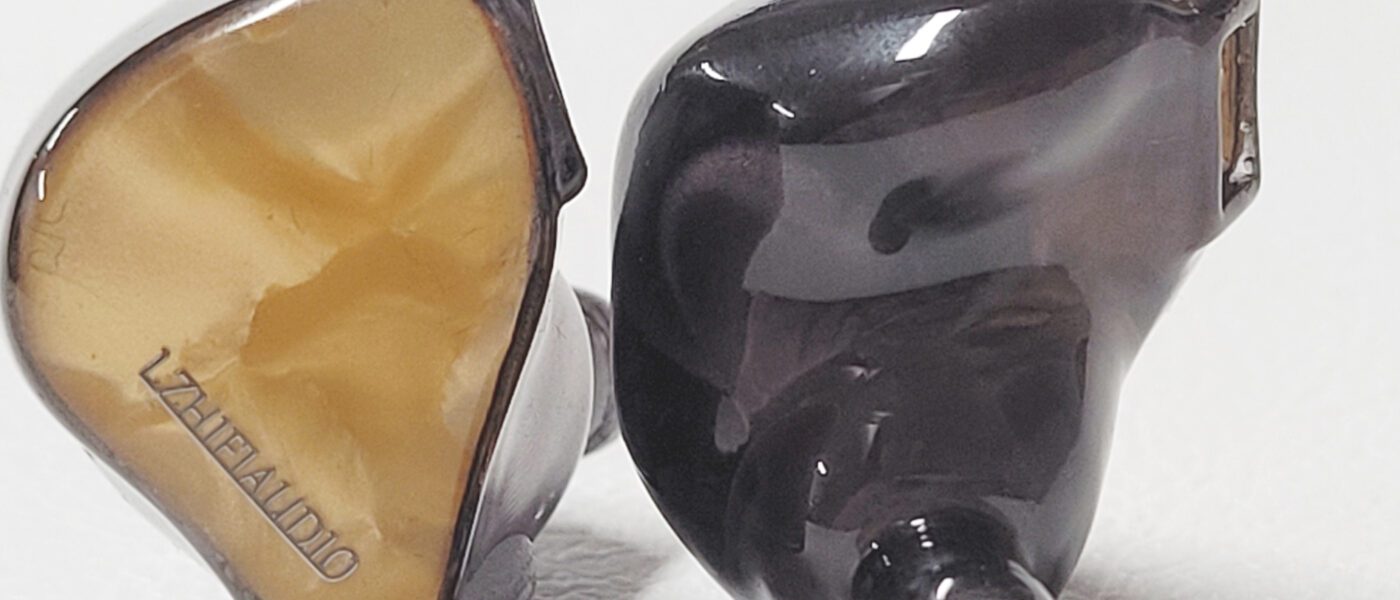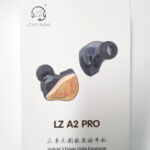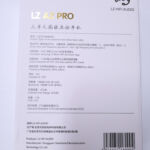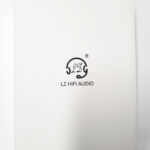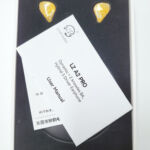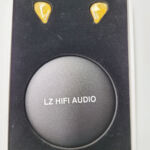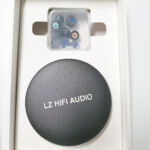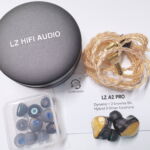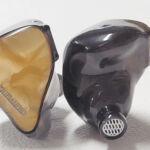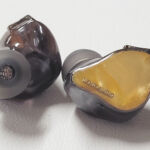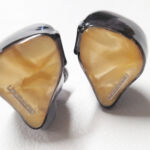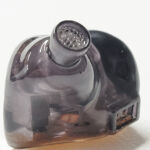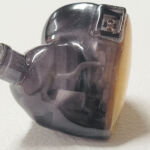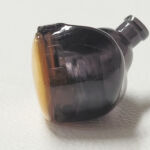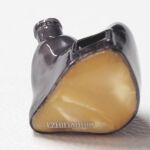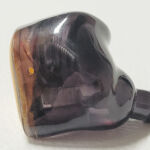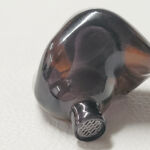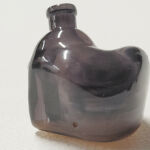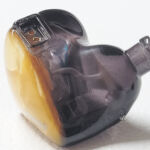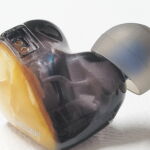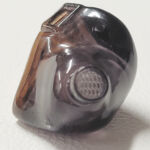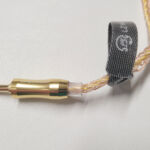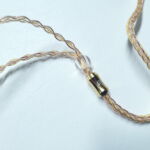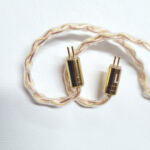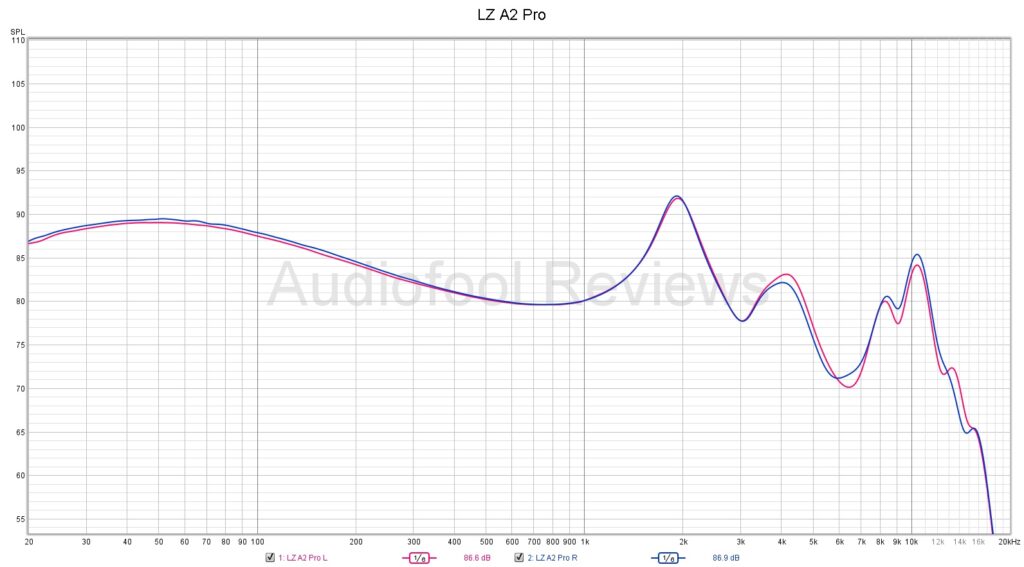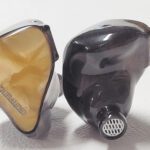LZ A2 Pro
disclaimer: The LZ A2 pro was provided by NiceHCK for purpose of this review. I have no financial interest in either LZ or NiceHCK and have received no direction or incentives from either in writing this review. If you have an interest in LZ products, see their website or Facebook page or to purchase an LZ A2 Pro, see NiceHCK.
Unboxing / Packaging:
The A2 Pro ships in a while lift top box with the LZ logo in the center in gloss black. An outer slipcover has the earpieces and model name on front and the specs on reverse but the box itself is rather subdued. Inside the box we are greeted with a velour foam layer with the earpieces at top and the pill style case below. Removing the foam reveals a small clear plastic box of tips in two styles. There are small, medium, and large tips in a gray transparent silicone with blue cores and a set of black silicone tips with colored cores. The cable is hiding inside the hard case and a
Build/Fit:
The earpieces are a 2 part design made entirely of resin with a black translucent inner shell and a gold marbled face plate. Nozzles are part of the inner shell and have a lip for tip retention and a forward and slightly upward rake when seated in the ear. Insertion depth and isolation are about average as most of the body sits behind the ear canal. The body itself is the now common semi-custom tear-drop shape and should be an easy fit for all but the smallest ears as it is on the smaller side. The bulk of the body sits in the ear and with very little heft to the earpieces and pre-formed hooks on the cable what little weight is present is well distributed. I found the A2 Pro comfortable for long wear with no physical fatigue.
Internals:
The A2 Pro uses a 10mm dynamic driver and a pair of Knowles balanced armatures. LZ is pretty tight lipped about which armatures or specifics about the dynamic driver so exact model numbers will have to come from a tear down. Best guess is the armatures are 30017 although there are a couple other models in the Knowles line-up that are also possible (30095 is usually a bit hotter and doesn’t cover mids as much and 32257 has the opposite problem) so since LZ lists the armatures as a pair of mid/high drivers, the 30017 is a more logical pick). Nominal impedance is 15Ω with a sensitivity of 108 dB/mW. Those numbers should mean the A2 Pro is easy to drive but requires some source matching as the low impedance requires a source with a less than 2Ω output impedance to do its best work. I found the A2 pro easy to drive from a table or dongle and while it does scale a bit qualitatively with better sources, the ceiling is fairly low so those using dongles or tablets as source won’t be missing out.
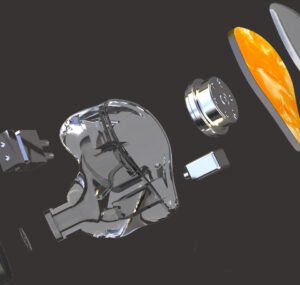
Cable:
The provided cable has gold accents at the jack, splitter, and bi-pin connectors that match nicely with the gold banding in the face plate. Even the wires themselves, 4N OFC and silver plated OFC, are a mixture of copper (rose gold per LZ) and gold colored strands to match the face-plates. The wires are an 8 wire braid from jack to splitter and a looser 4 wire braid above that point. The jack is a 3.5mm single ended type in a straight housing with a slight wasp-waist to the housing for better grip. The splitter has a matching aesthetic in both shape and color while the connectors at the north end share the color but are a simpler barrel style. Connectors are 0.78mm with prominent L and R on the housings in white for easy indexing. The cable is a good mix of lightweight materials so while it is a fairly large cable, it doesn’t feel large when worn and puts no extra pressure on the earhooks.
Tips:
I never did find an explanation of the two styles of tips included with the A2 Pro. As a matter of fact their own ad copy simply states “some silica gel tips” in the inventory list without elaborating on count, style, or size. I found the gray/blue core tips to have a bit more low end presence and be a bit tamer at the top end while the narrower colored bores decrease bass quantity slightly and made the treble a bit more pronounced.
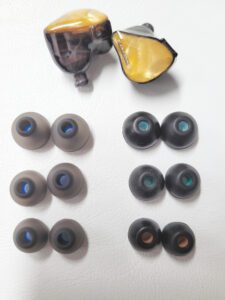
Sound:
Bass:
The A2 Pro has good sub-bass presence with an emphasis centered around 80Hz and slowly dropping back to either side. Roll-off doesn’t become evident until into the lower 20s with good rumble when called upon. Mid-bass slowly drops back as it moves up into the lower-mids but remains somewhat emphasized for most of its range. Driver speed is about average giving the A2 pro a mildly blunted attack and slower decay that contributes a little warmth and note weight at the expense of absolute clarity. Detail in the best is about average again with a little smoothing and warming overriding absolute resolution.
Mids:
The mids on the A2 Pro are its weak point. Lower mids are somewhat recessed with male vocals and lower guitars sounding a step behind other instruments and lacking a little bit of definition. This is in stark contrast to the rapid rise of the upper mids which leaves the A2 pro with a spike in the 2 – 3 kHz range that dominates the mid-range if not the entire signature. Guitar can become very shouty and female vocals are too emphasized and nasal as a result of the spike. The combination of the lower mid suck-out followed by the quick spike gives the mids a strange tonality that hurts string arrangements as the pieces simply don’t fit together like they should.
Treble:
Here again the A2 Pro differs significantly from the average tuning in the class with a distinct drop back from the early spike in the 2-3kHz range and then more energy added back in the upper-treble range. This leaves the lower treble rather laid-back after the semi-assault on the ears of the upper-mids. The upside is that the A2 Pro doesn’t get sibiliant or harsh. The downside is that lack of emphasis here also limits detail retrieval. Snare has a little less sharpness to its rattle than some but the upper push gives cymbals a more realistic tone. The other issue for me is the push back in the 9kHz range can generate fatigue during long listening sections. This push isn’t a huge KZ like spike that immediately jumps out but over time it does manifest itself and fatigue starts to develop. Oddly it can be somewhat fatiguing and still not feel completely open at the top with air and sparkle both somewhat limited.
Soundstage / Imaging:
Stage is wider than deep by a good margin but it does manage to show some height in the mix as well. Seating the orchestra is made a bit strange by the odd tonality and layering and instrument separation are about average for the class which helps keep things from being too far out of place. Imaging is about average as well with movements around the stage easy to track but positions being somewhat loosely defined especially at center front. There is some mild compression that is evident as tracks get faster but that is far from unexpected at this price level.
Thoughts / Conclusion:
As much as I appreciate the build, better than average kit and cable, and the low-end on the A2 pro, the mid-range just keeps me from being able to put it on any recommended list. The spike in the upper mids leaves the lower mids feeling sucked out and the makes the upper mids far too shouty. EQ helps but even then that character comes through and when combined with the emphasis in the 9kHz range, it lends to fatigue rather quickly. Unfortunately this one was a swing and a miss for me, much as I like the original. Stick with the A6 mini, its a better bet.
-
Bass - 7/107/10
-
Mids - 5/105/10
-
Treble - 6.5/106.5/10
-
Soundstage - 6.5/106.5/10
-
Imaging - 6/106/10
Summary
Pros: Good build quality, better than average cable, solid-lows
Cons: odd-tuning with large upper-mid spike and laid-back lower treble – some fatigue

